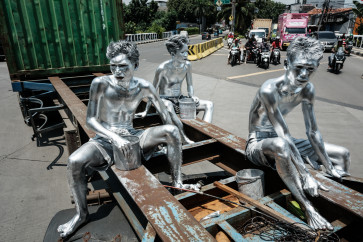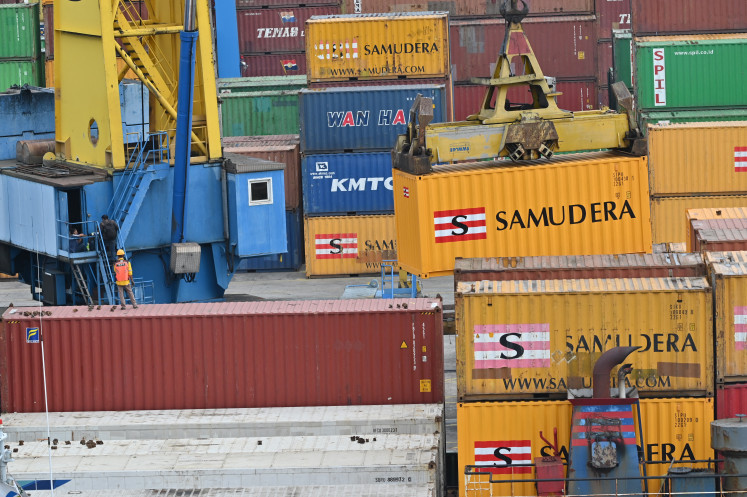AIIB to provide $500 million to finance electricity projects
PLN will need $1
Change text size
Gift Premium Articles
to Anyone

PLN will need $1.05 billion to build power transmission system
Beijing-based multilateral development lender Asian Infrastructure Investment Bank (AIIB) is set to approve a government loan proposal for the improvement of the country’s electricity distribution.
The US$500 million loan will go to the Indonesia PLN East Java and Bali Power Distribution Strengthening Project and be channeled to state-owned electricity giant PLN.
“The project will probably be approved by the bank’s board in September,” said AIIB vice president and chief administration officer Luky Eko Wuryanto. “It’s really subject to the board’s approval.”
The core of the project, he went on to say, is to strengthen power transmission across Java, particularly in its eastern part, where the output capacity is the most reliable compared to other regions.
A summary of the projects states that it will contribute to PLN’s first five-year development plan for East Java and Bali under the 2019-2028 Electricity Business Plan (RUPTL), which includes the construction of 17,000 kilometers of medium-voltage distribution lines and the installation of 1,500 megavolt amperes (MVA) of medium-voltage distribution transformers.
AIIB’s loan will cover almost half of the total costs needed to build and install the $1.05 billion transmission system. PLN is set to bear the remaining $550 million.
The government will act as the guarantor of the loan, which has a February 2024 closing date.
According to the summary, the project will provide increased access to grid and nongrid electricity to 12.42 million households once the distribution lines and transformers are constructed and installed.
“If this happens, the transmission will be very strong and sustainable and the recent [blackout] won’t happen again,” Luky said. “This is also important for the industry.”
Jakarta, West Java and some parts of Central Java suffered a massive blackout in early August. The hours-long power outage affected at least 21.9 million customers, both industries and households, and was most likely the worst blackout that has hit Greater Jakarta and West Java since 1997.
PLN acting president director Sripeni Inten at the time blamed disruptions in the backbone electricity system that supports power for Java and Bali as the cause of the power outage.
“We can’t afford to experience another blackout, especially because such a situation will incur losses on the production sector,” said Luky, who was previously a high-ranking official at the Office of the Coordinating Economic Minister. “Moreover, virtual technology nowadays requires 24-hour [electricity].”
PLN’s board of directors did not respond to The Jakarta Post’s requests for comments.
Fabby Tumiwa, executive director of Jakarta-based sustainability think tank Institute for Essential Services Reform (IESR), said strengthened power distribution was essential for enhancing the country’s electricity transmission, improving power quality received by end consumers and reducing losses at medium-and low-voltage lines.
“There will always be the risk of a blackout, but with this strengthened transmission network, the risks from the distribution side can be reduced,” he wrote in text messages on Friday.
“In addition to that, worth to be highlighted that electricity supply for the customers will be more reliable,” he added.
AIIB granted $939.9 million in loans for five projects in Indonesia from 2016 to 2018, including the Mandalika Urban and Tourism Infrastructure Project in Lombok, West Nusa Tenggara, the Regional Infrastructure Development Fund and National Slum Upgrading Project.
As of August, the 100-member bank has disbursed $8.53 billion in loans for 46 projects. Indonesia is currently AIIB’s second-largest borrower after India.









